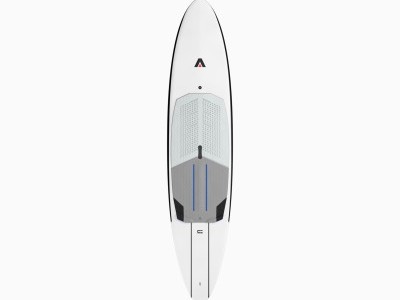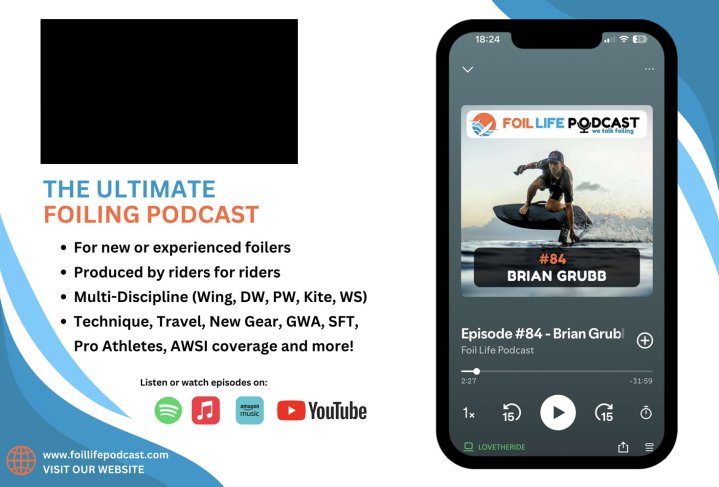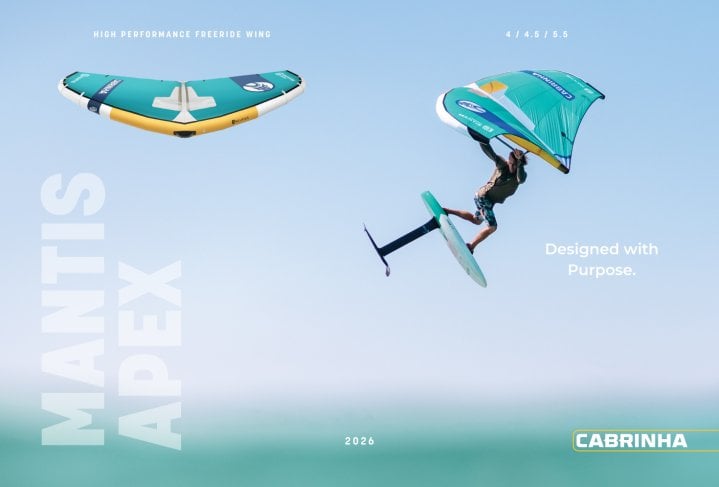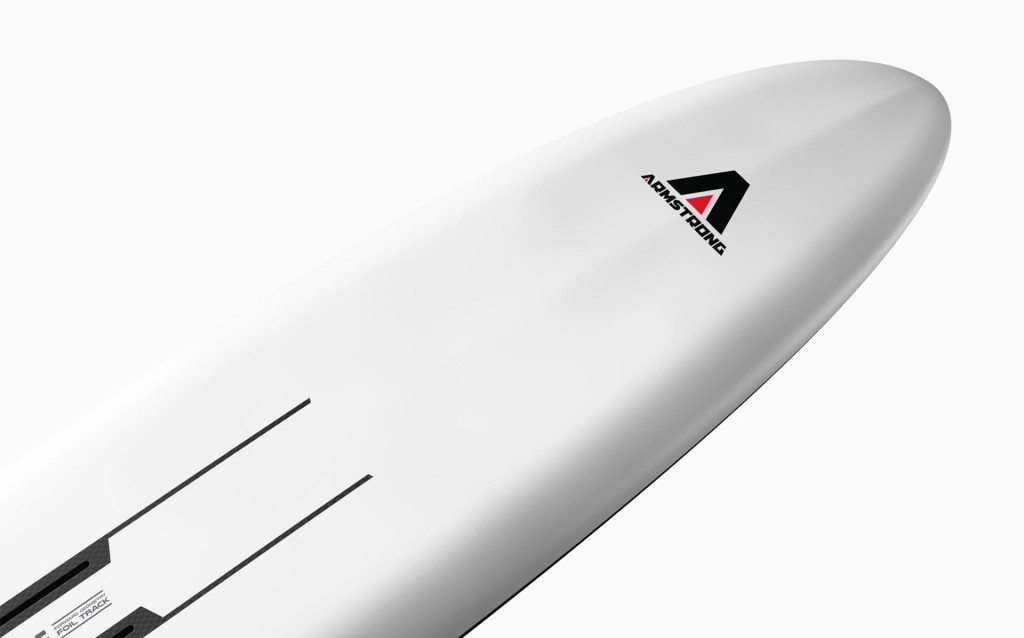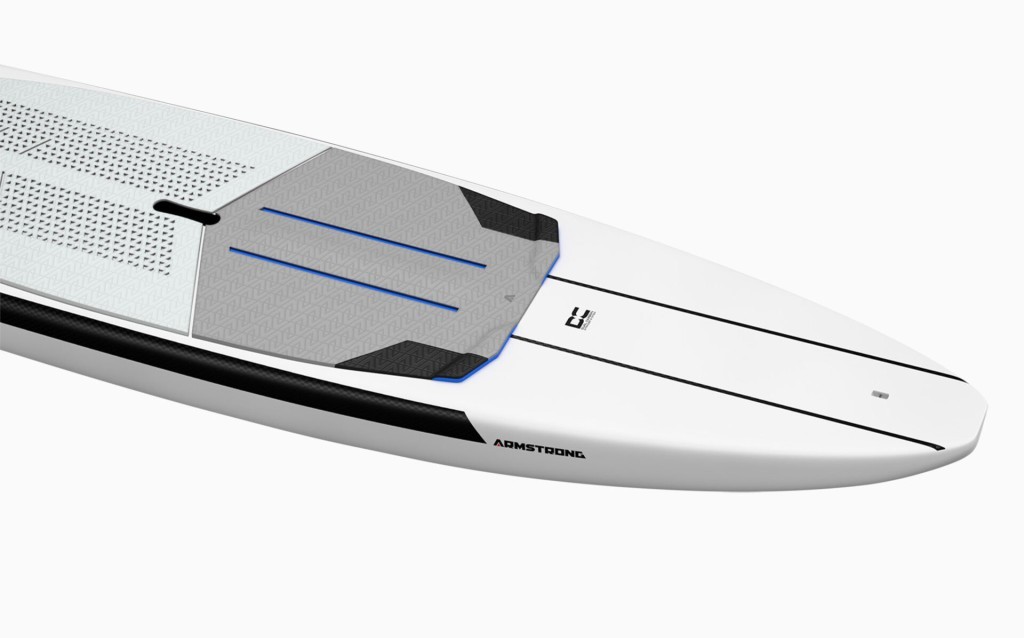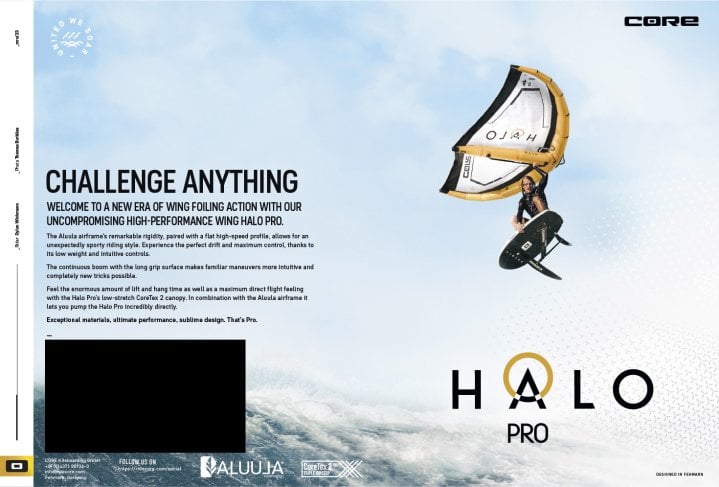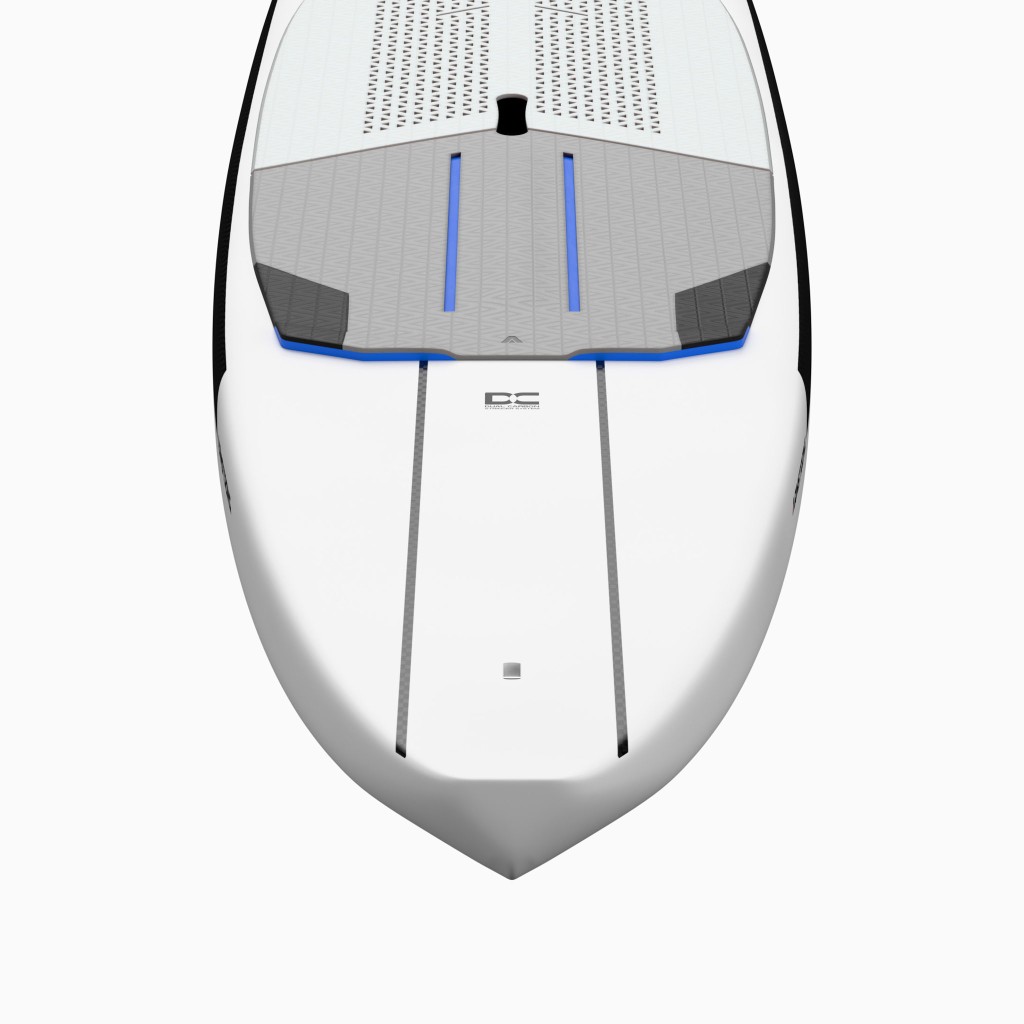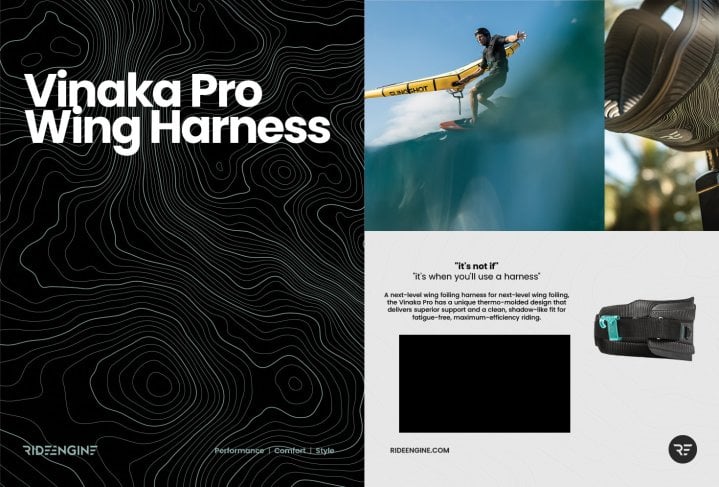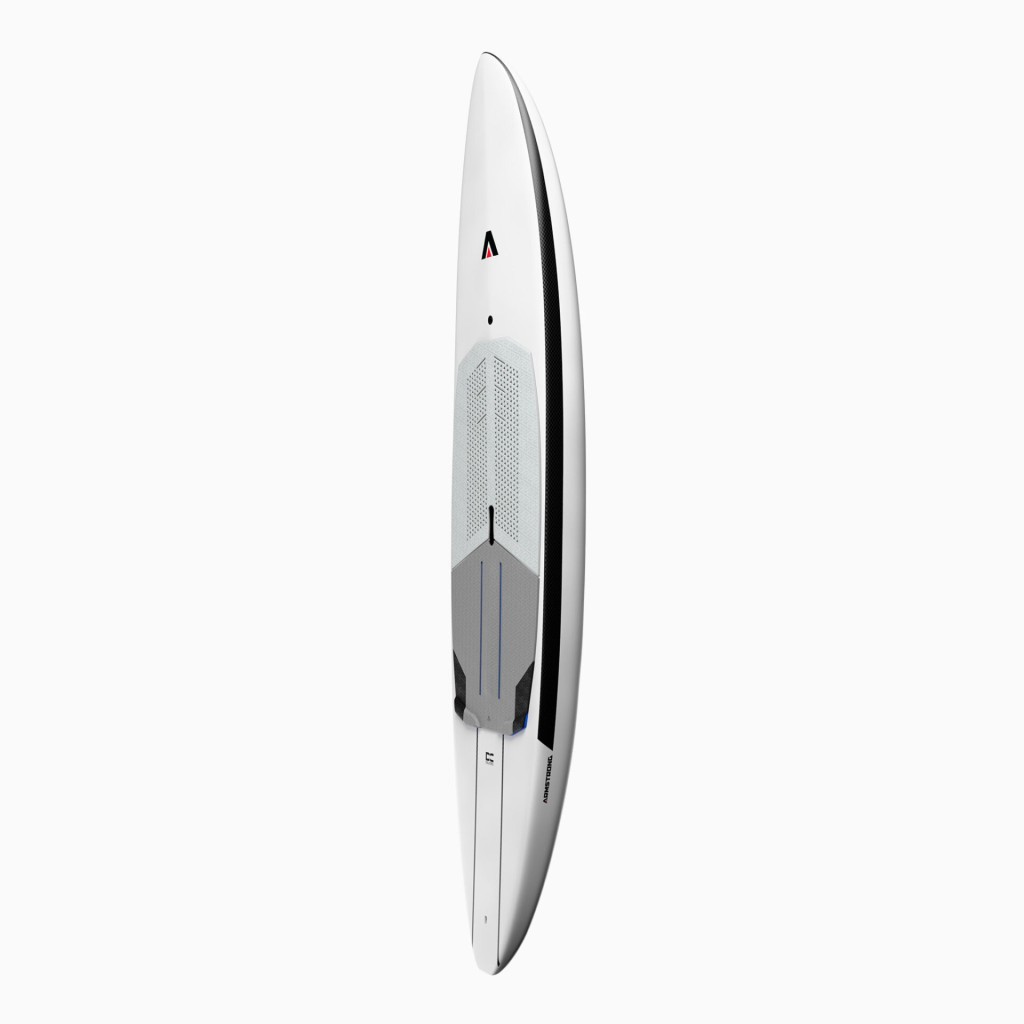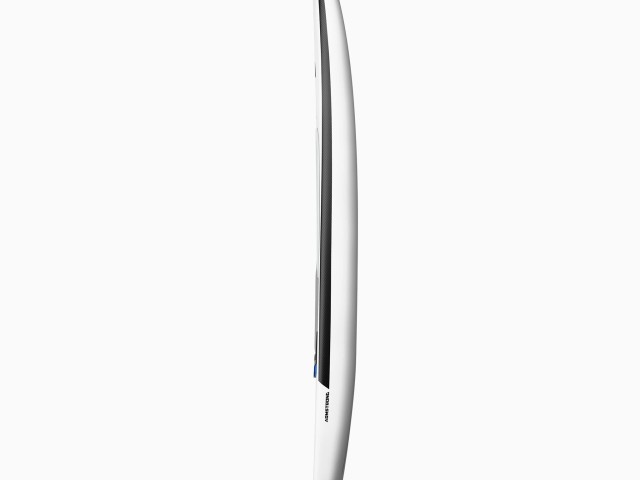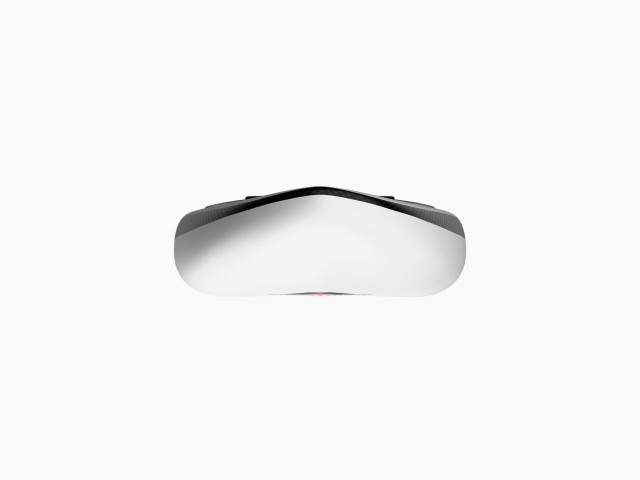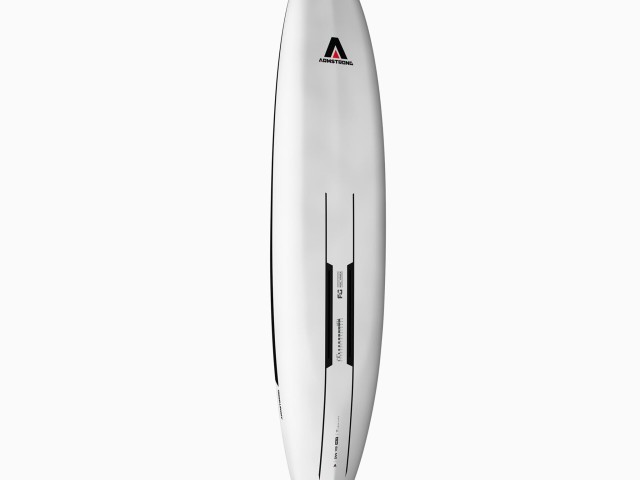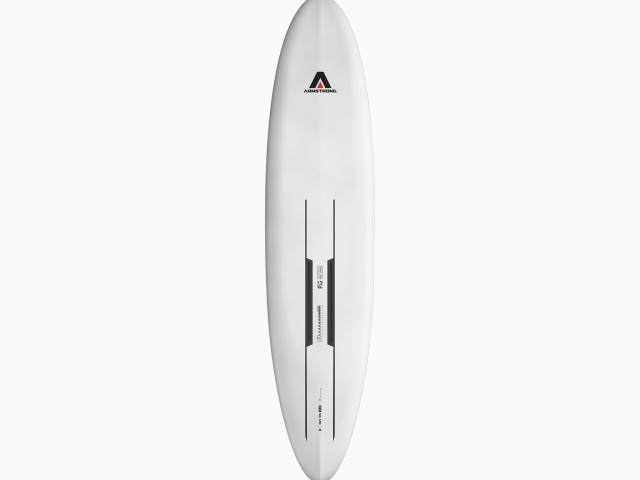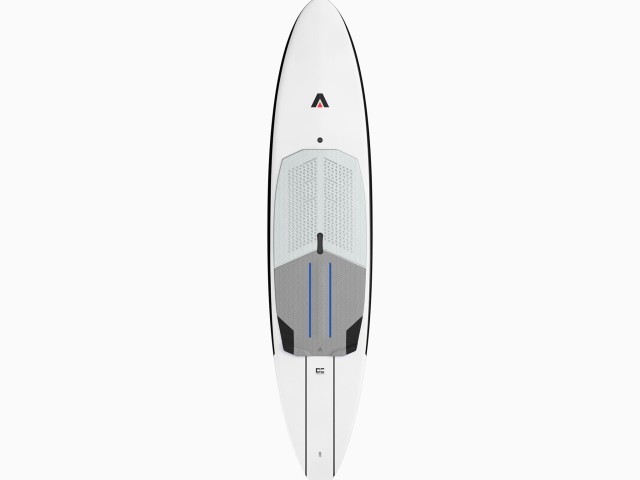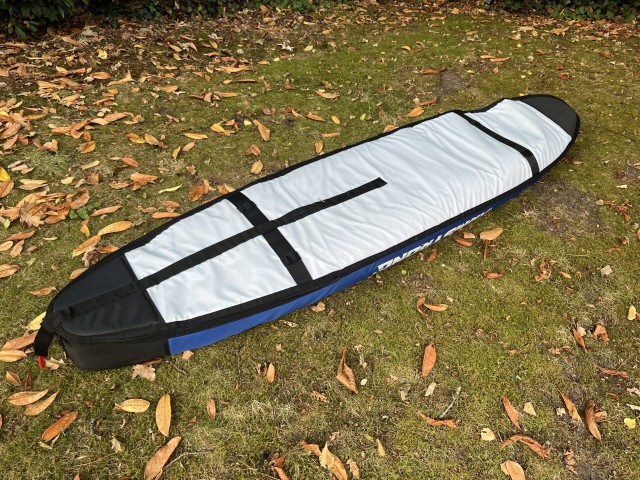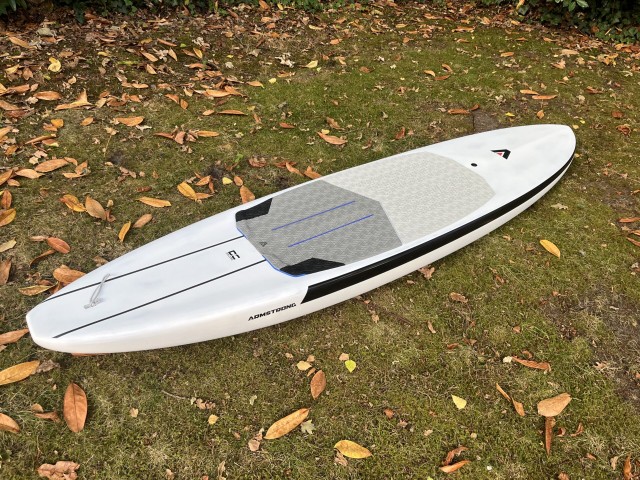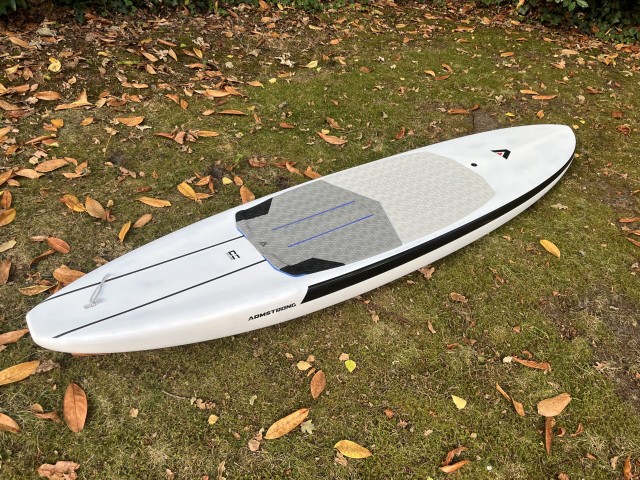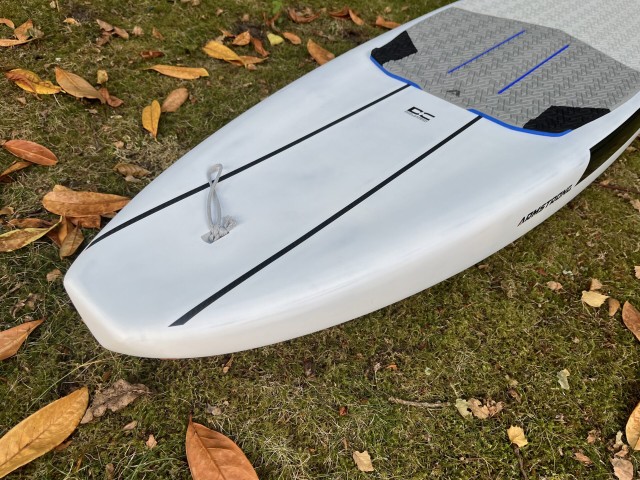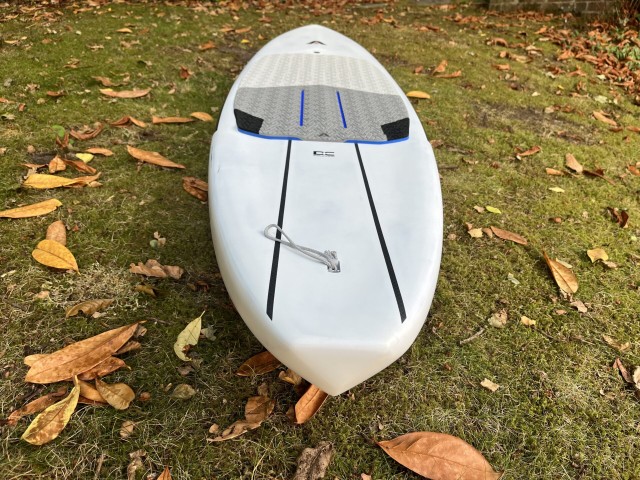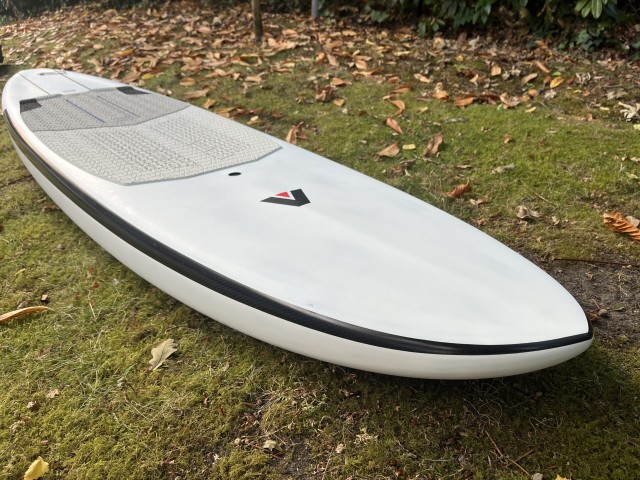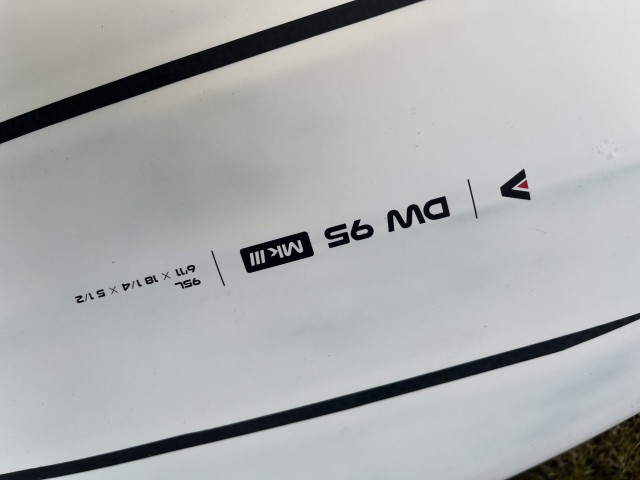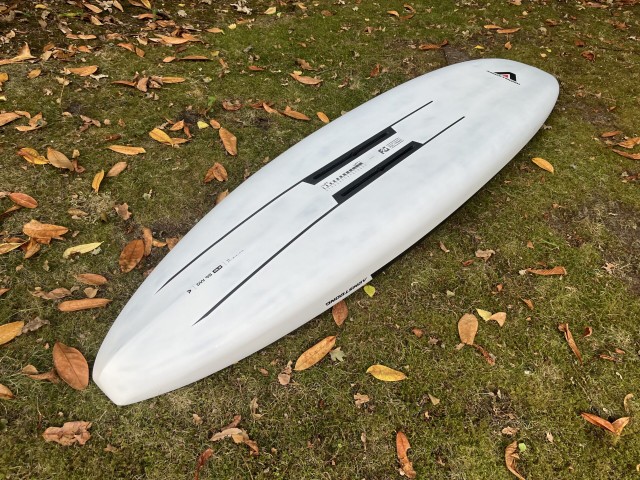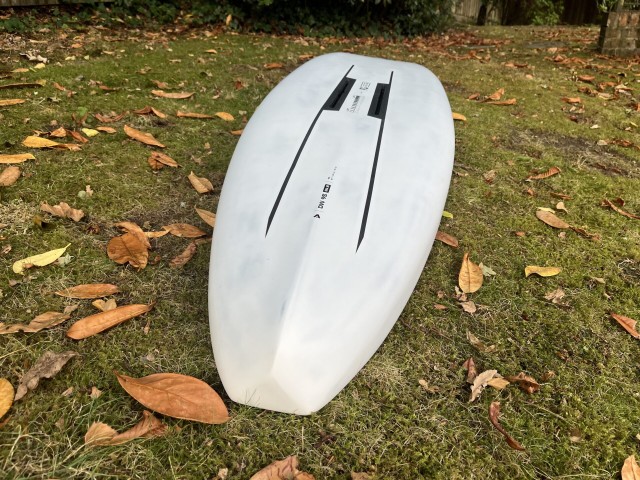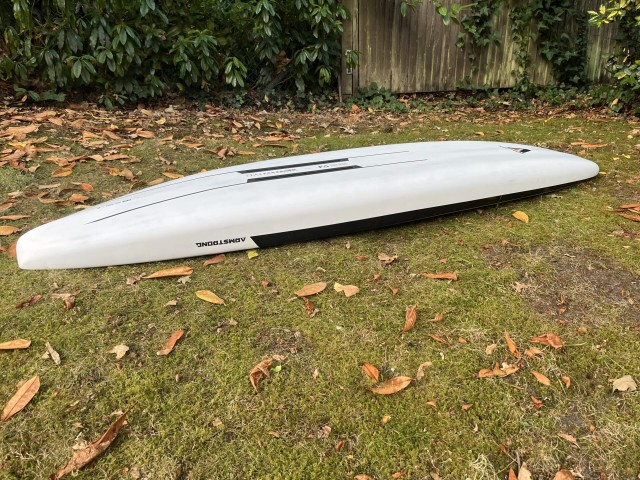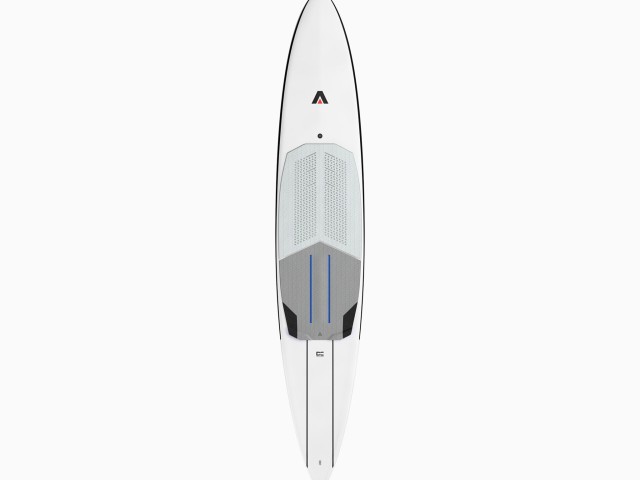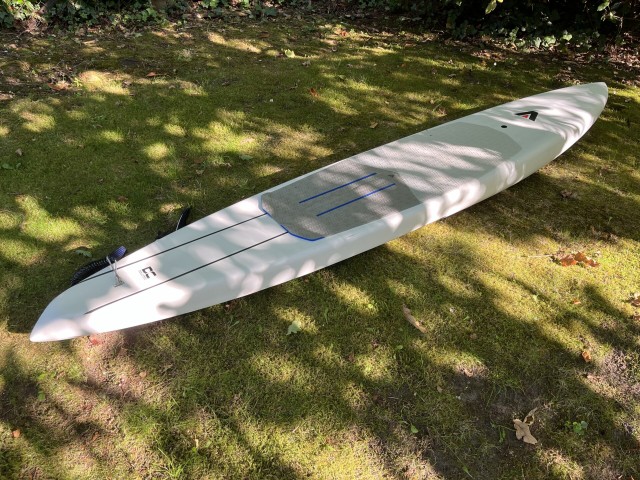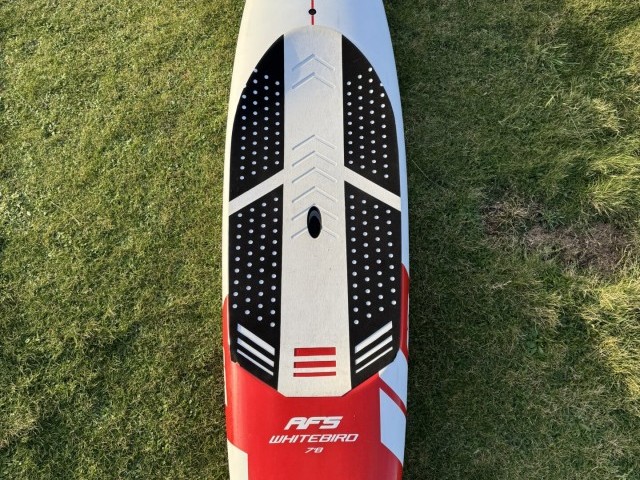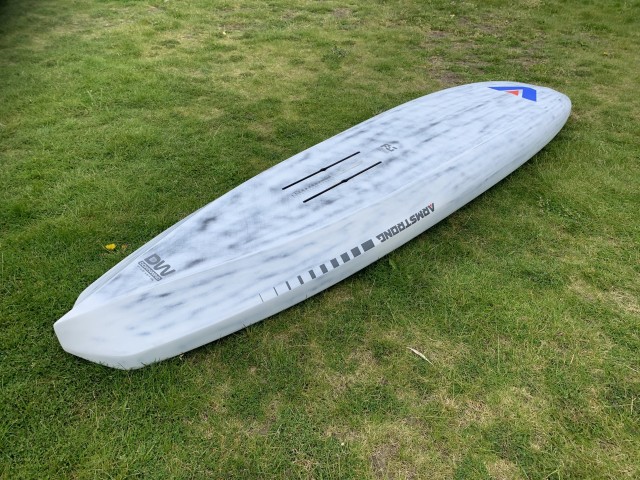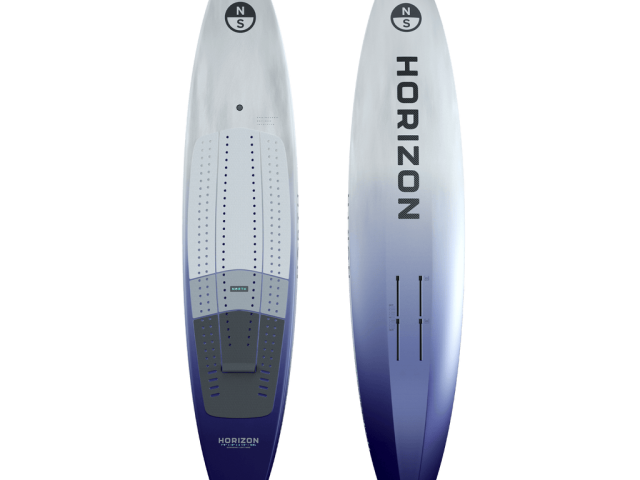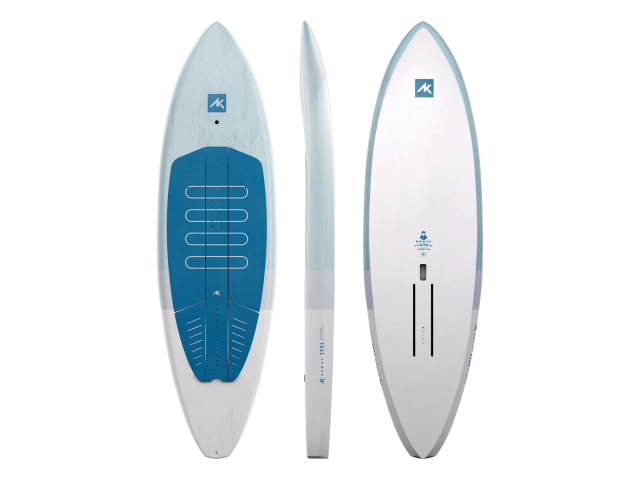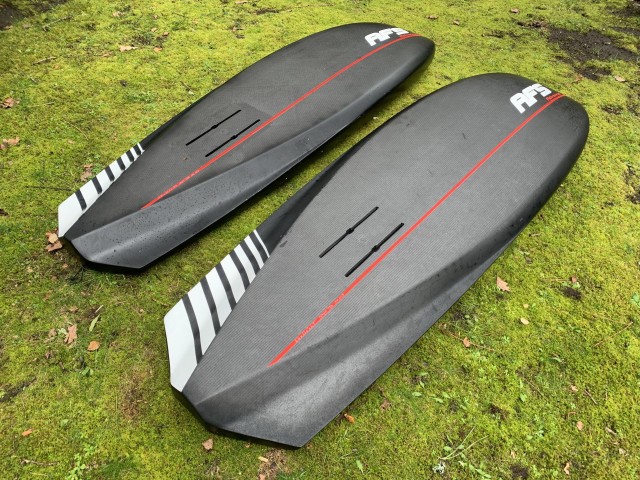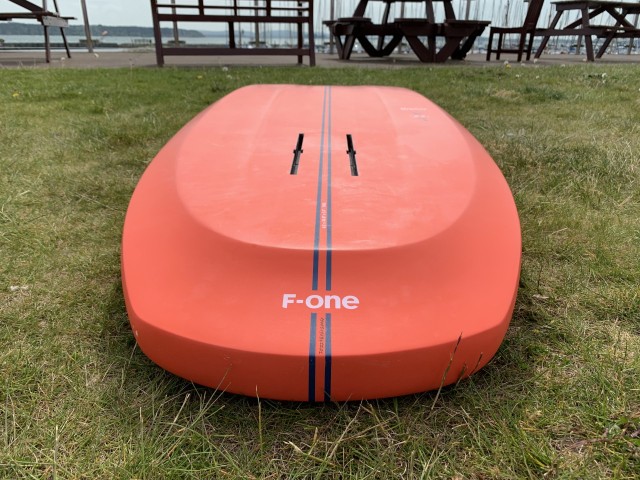At A Glance
Following on from our review of the Ocean 95L last issue, we’ve got the 95L the Downwind Mk III to compare it with. As always with Armstrong, the finish is immaculate, and it arrived in a shiny new blue board bag, as standard.
The Mk3 represents another step in the evolution of board design for foilers looking to advance their skills. At the core of the Mk III is a redesigned hull that favours acceleration and early lift. The displacement-style bottom is designed to slice through the water, reduce drag and allow the rider to build speed with less effort and more glide. When it arrived in the post, I was super excited to put it through its paces and see if it did just that!
Armstrong has designed the Mk3 with a shorter, narrower outline compared to earlier versions, making for quicker, more intuitive turning. They’ve also added forward foil track placement, giving riders more range in their setup, helping to fine-tune lift and control based on conditions and personal style.
Rounded rails add to the overall stability, designed to give the rider more margin for error when dealing with turbulence, touchdowns, or lulls in power.
Structurally, the Mk III is built for durability and responsiveness. A dual carbon stringer system runs vertically through the core, increasing torsional stiffness and improving feedback between the rider and foil. This should mean more precise control, especially while pumping or doing hard turns.
On the water
My first test with this board was to go out for some flat water paddle ups. I ran it back-to-back with the Ocean board, using the same APF1350 to compare. The result wasn’t as different as I’d expected in terms of getting to foil. It took between 5 and 10 extra paddle strokes to get on the foil. Once on foil, it was noticeably easier to pump and felt smaller/more manoeuvrable under my feet, which was super satisfying!
That displacement hull has made a big difference to the take-off speed of the board. At just 6’11, I thought I’d really struggle when I took it downwinding. Don’t get me wrong, it’s harder to get on foil than the Ocean, but it’s worth the extra effort on the right day, as it makes your downwind run more playful.
I took it for several downwind runs, always in decent conditions, the board felt balanced and confidence-inspiring, even when the water got messy and I had to read.
For me, this Board will be for Solent in wind against tide conditions (a lot like Hood River) or for those light wind big foil days when I know I can get on foil fairly easily but will have a lot of pumping to do. The shorter length will definitely make that pump more efficient.
I didn’t get around to trying it with a wing, but it’s a no-brainer! These downwind boards make light work of wing sessions, and the extra width compared to the Ocean is welcome when bearing that in mind. It’ll give you extra stability when getting up to speed and tracking across the wind.
Summary
Whether you’re just starting to link bumps or you’re chasing high-speed lines in tight, choppy conditions. This board doesn’t just aim to help you get on foil, it’s built to keep you there, with responsiveness and control that cater to both newer riders and experienced chargers pushing the limits of what’s possible downwind.
Offered in a range of sizes from 95L to 135L, the Mk III is versatile enough to suit different rider weights and skill levels. Whether you’re looking to accelerate your learning curve or explore the edges of what’s possible in downwind foiling, the Mk III is built to meet you there.
Videos
For more information visit Armstrong Foils
Related
By Jack Galloway

